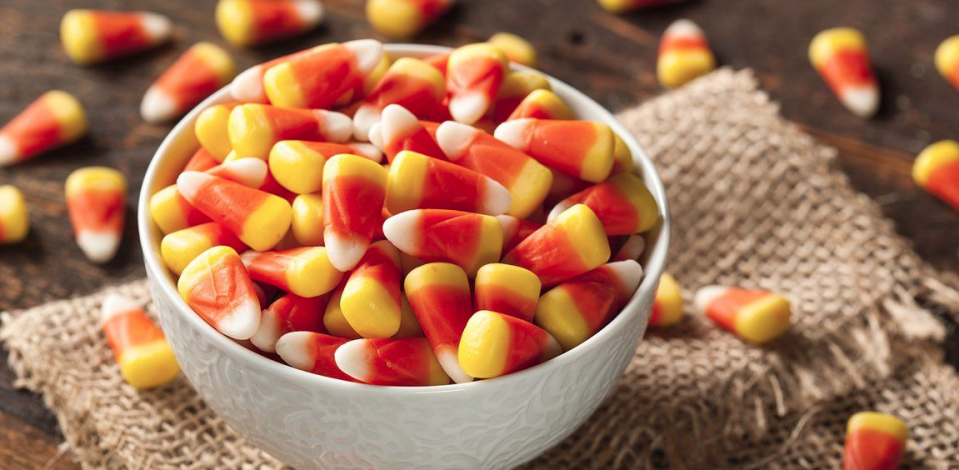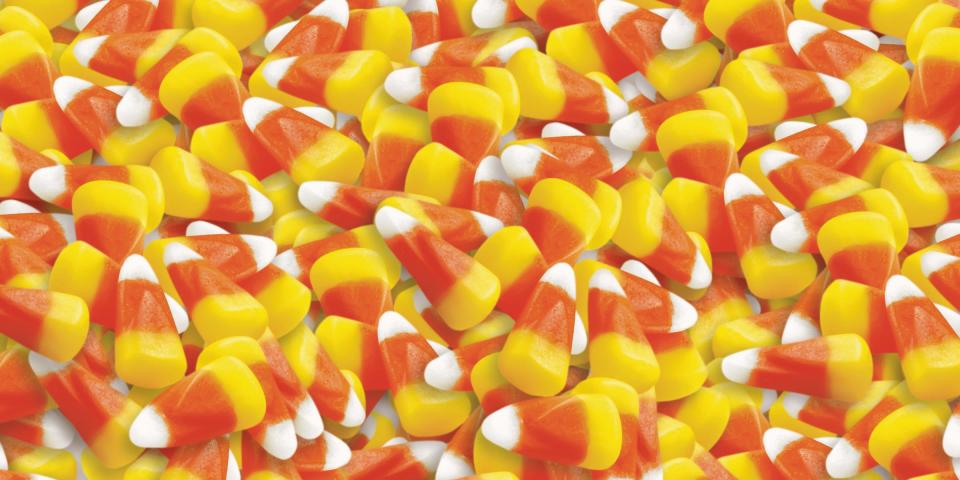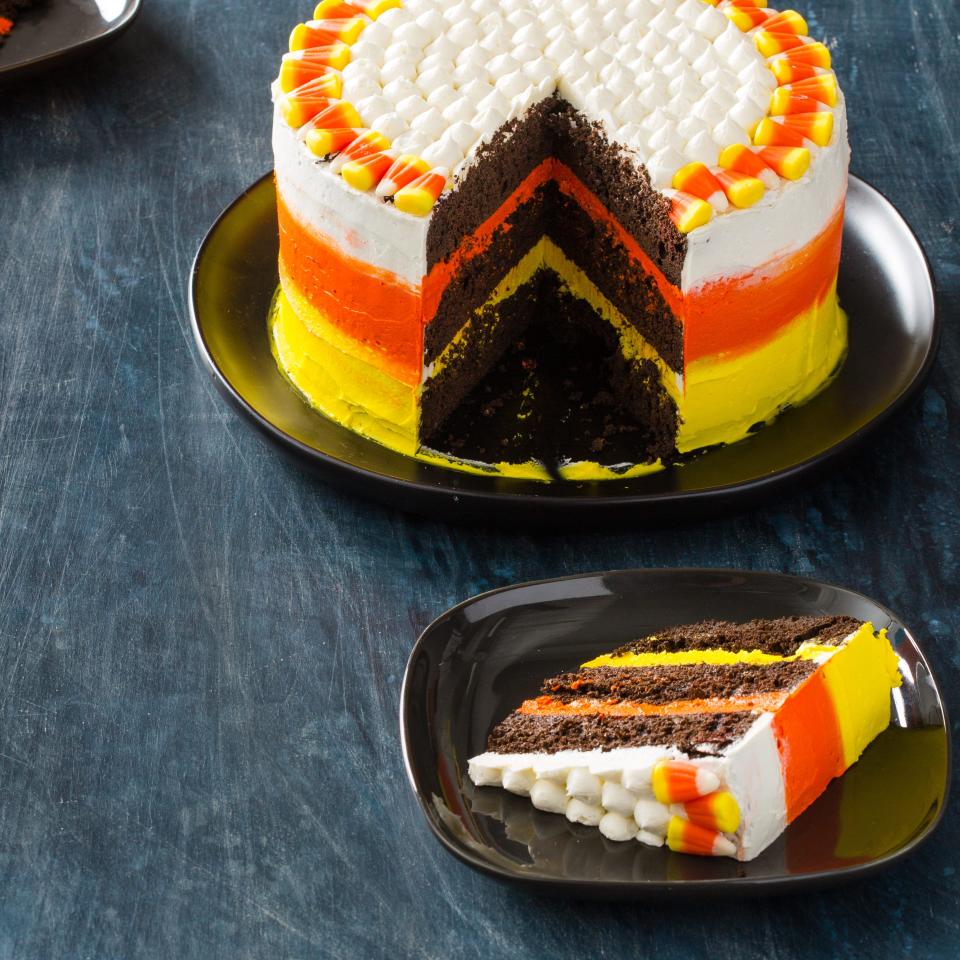Originally called 'chicken feed,' this candy now divides a nation

Click here for the 2022 version of this story.
Candy corn. Just the name makes some people salivate and others sick to their stomachs.
As Halloween returns candy corn to prominence, it also re-ignites a long-running divisive debate: Is it a perfect candy or is it an abomination?
For many, candy corn represents the reason for the season. Most of the 9 billion kernels, more than 35 million pounds, produced annually – according to past pronouncements by the National Confectioners Association – are eaten around Halloween.
For those who love candy corn, no candy does it better at Halloween.
"I will fall.on.a.sword.for my CANDY CORN!" exclaimed business development guru Perrin Kaplan on a Facebook thread about the candy.
That sweet, waxy texture isn't for everyone though. And investigating how the candy is made might give some pause – confectioner's glaze on the treat contains a bug secretion.
Halloween spending: Americans will spend a record $10 billion on candy, decorations and pet costumes
Halloween costumes with masks: 25 creative and fun options for kids

Bones and bugs in candy corn?
The ingredients in candy corn might surprise some candy lovers. In addition to sugar, corn syrup, salt, sesame oil, honey, artificial flavor, and food colorings, candy corn also has gelatin and confectioner's glaze as ingredients.
Those last two items have led some candy corn detractors to note that candy corn is made of animal hides and bones, like Jell-O gelatin. And confectioner's glaze, also known as shellac, is made from lac-resin, which – are you ready for this? – is a bug secretion. The lac bug – a parasite found in tropical and subtropical regions, according to news site Science Daily – secretes a waxy, waterproof coating to protect itself.
Workers scrape those secretions from plants and, as education site ThoughtCo.com notes, some of the bugs are gathered in the process. The shellac is also used in paints, cosmetics and plenty of other products, according to The Vegetarian Resource Group.
Wait, bug secretions in my candy? Yes. "It's not unusual at all," said Paul Adams, a senior editor at Cook's Illustrated Magazine, which is published by America's Test Kitchen. "The lac insect produces a shiny, durable resin that's used as the basis for all kinds of coatings: the words 'shellac' and 'lacquer' both come from the name of the bug."
Typically found under the name "confectioner's glaze" or "pure food glaze," lac coating is used in making gum and on all sorts of shiny candies including jelly beans, Milk Duds and Whoppers, Adams said. "It's also responsible for the glossy coating on many pharmaceutical pills, as well as citrus fruits and cosmetics."
Good news for chocolate lovers: M&M's do not use the substance.

The caloric breakdown: Each piece of candy corn has 4 calories, according to Jelly Belly. But Brach's puts the caloric count at about 7, since 15 pieces add up to 110 calories on its packaging of Classic Candy Corn. That serving has 22 grams of sugar – experts recommend no more than 25 grams per day.
Candy corn: Why is it so divisive?
Candy corn came in as the third most popular candy to stock up on for this year's holiday in a recent NCA online survey, behind chocolate and gummy candy.
#Halloween is fast approaching - learn more about what treats to stock up on for trick-or-treaters this year. #HowWeHalloweenhttps://t.co/dw7uQGCvk4 pic.twitter.com/bS9SxvtY1z
— National Confectioners Association (@CandyUSA) August 31, 2021
But not everyone loves, or even likes, the candy. Many despise it.
"Run away. Gross. Weird consistency. Corn isn’t candy and even kids don’t like it," tweeted public relations executive Patrick Seybold. "So…why does it still exist?"
Three out of 10 people said, "Candy corn is the best!" in an unscientific survey I conducted on Twitter (it got about 700 votes). But 37% disagree ("Nope. Hate it."). One-third voted, "I can tolerate it."
Perhaps those who dislike it do so because of its texture and humdrum flavor. "From a sensory perspective, the hatred of candy corn can be explained because, unlike many candies, its flavor profile doesn't incorporate contrast," Adams told USA TODAY. "It's just intensely sweet-tasting, which can produce palate fatigue, like eating spoonfuls of honey or sugar."
Those who despise candy corn can cherish that it earned the title of Worst Halloween Candy for the second consecutive year, ahead of circus peanuts, those orange peanut-shaped marshmallow spongy candies, according to CandyStore.com. Favorite Halloween candy? Reese's Peanut Butter Cups.
Yet, for those who love candy corn, the treat can be transportive, says Adams, who recalls his mother eating just the white tips of each piece. "Why is it loved as much as hated? If you grew up eating it, it probably has delightful associations in your mind," he said.
The origins of candy corn
Candy corn was first harvested in the late 19th century. Most histories have the Wunderle Candy Co. of Philadelphia inventing the kernel-shaped treat in the 1880s.
The Goelitz Confectionery Co. in Cincinnati acquired the recipe and began making candy corn about 1898, according to National Geographic. The Goelitz Confectionery Co. changed its name to the Jelly Belly Candy Co. in 2001.
Decades ago, candy corn was a year-round candy called "chicken feed," and aimed at agricultural and rural families, according to History.com. (You can see Jelly Belly vice chairman Bill Kelley, the great-grandson of Gustav Goelitz and a fourth generation candy maker, talk about candy corn in an CBS Sunday Morning video from 2011.)
"It wasn’t made for fall, but it became a fall thing ultimately," said Marie Wright, chief global flavorist at food processing company ADM, which makes corn syrup, sweeteners and natural flavorings and colorings used in candy corn.
Originally, candy corn was made by hand with candy makers pouring a sequence of passes of different colored hot edible icing called fondant into kernel-shaped molds, according to Jelly Belly, which claims to be the longest continuous maker of the candy and will make about 250,000 pounds, or 125 tons, of it this year.
Today, candy corn is made the same way – using essentially the same recipe – by machines. Where some candies' flavors change over time, candy corn "tastes exactly how I remember it. Everybody says the flavor doesn’t change," Wright said.
Harvest Corn, Mermaid Candy Corn and even Turkey Dinner Candy Corn
As candy corn became a seasonal snack, manufacturers have expanded their repertoire with different flavors, for different seasons. Jelly Belly has made seasonal candy corns including larger Giant Corn – with cinnamon and chocolate flavored corn – for Halloween, as well as Reindeer Corn, Cupid Corn and Bunny Corn.
Competitor Brach's claims to sell the most candy corn but won't say how much. Instead, the candy maker said it produced enough in 2020 to encircle the Earth seven times, if all the candy corn it made was placed end to end.
Brach's candy corn offshoots include Harvest Corn, which is made with cocoa butter and a brown section replacing the yellow. Other candy corn crops: Mermaid Candy Corn (includes strawberry and lemon flavored candies) and Turkey Dinner Candy Corn (available only at Walgreen's) with turkey, gravy, stuffing and sweet potato pie flavors.
Brach's also seeks to woo candy corn haters with alternative flavored kernel-shaped candies such as Trolli Sour Brite Candy Corn (grape/strawberry is among the flavors) and Nerds Candy Corn, which is sour and chewy.
If you cannot get enough candy corn, you can make your own. The Food Network's Alton Brown shows you how in a video on the channel's website.
And America's Test Kitchen has a candy corn cake, which uses the candy as an ingredient, that you can bake at home.

Whether you go to those extremes or not, many homes make candy corn part of their Halloween festivities. "Even the haters still want to have bowls of it at home because it signifies fall. There's this nostalgia thing. But if you ask them if they are going to eat it …" ADM's Wright said.
"It's fun to observe this emotional reaction to this tiny little nothing candy," she said.
Follow Mike Snider on Twitter: @MikeSnider.
This article originally appeared on USA TODAY: Candy corn is a Halloween candy people love or hate: what's in it?

 Yahoo Movies
Yahoo Movies 